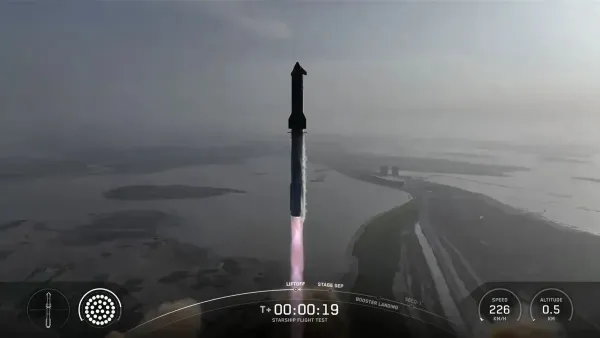
May 31, 2025 — Starbase, Texas — SpaceX’s ambitious ninth test flight of its next-generation Starship vehicle marked a pivotal milestone in the journey toward full launch system reusability. While the mission ultimately ended in the loss of both rocket stages, Flight 9 achieved key technical firstsincluding the historic reuse of a Super Heavy booster and the collection of vital in-flight data.
Launched on May 27Starship Flight 9 was the first mission in which SpaceX reused its Super Heavy boosterthe 230-foot-tall first stage of its towering launch system. The booster had previously flown on Flight 8 in January 2025. For this reflight, four of its 33 Raptor engines were replacedwhile the remaining components underwent refurbishment—an early step toward proving SpaceX’s long-term goal of rocket stage reusability.
The booster was also used to conduct a new entry experimententering Earth’s atmosphere at a steeper angle to provide aerodynamic data for improved control during future landings.
Starship’s two-stage configuration includes the Super Heavy first stage and a 171-foot-tall upper stage known simply as Shipboth powered by Raptor engines. Flight 9 aimed to:
Reuse the Super Heavy booster
Demonstrate a more accurate atmospheric reentry
Test Starship’s active thermal protection and control systems
Deploy eight dummy Starlink satellites in space
Both stages separated as plannedand Ship reached spacemarking initial mission success. However, subsequent stages of the flight encountered failures.
About six minutes after launchthe Super Heavy booster disintegrated during its return burn, likely due to high stress during its atmospheric experiment. Ship, meanwhile, suffered a fuel tank leak that caused it to tumble uncontrollablyultimately preventing an in-space engine relight. The spacecraft reentered over the Indian Oceanwhere it was destroyed.
Despite the mission ending prematurely, SpaceX gathered valuable dataparticularly on:
Thermal protection tiles and their performance under high heat
The efficacy of active cooling systems
The aerodynamic properties of the reentry profile
Structural stress limits during booster return burns
Flight 9 follows a pattern of rapid prototyping and iterative improvement that defines SpaceX’s approach to aerospace innovation. Previous missions (Flights 7 and 8) saw successful Super Heavy landingsbut Ship failures due to stage anomalies. While Flight 9 replicated some of those upper-stage setbacks, it validated several new upgrades and introduced hardware reuse—a major leap toward operational sustainability.
With each test flight, SpaceX inches closer to realizing Starship’s vision as a fully reusable launch platformcapable of ferrying humans and cargo to the Moon, Mars, and beyond. Elon Musk has emphasized that such progress will come in waves, with failures serving as integral learning tools in the journey toward launch reliability and reusability.
Looking ahead, SpaceX plans to build upon Flight 9’s lessons in its upcoming Flight 10which is expected to include further improvements to heat shielding, propellant tank durability, and in-space maneuvering systems. The integration of more advanced sensor arrays will also help refine booster return trajectories and ship navigation in space.
Despite setbacks, Flight 9 will likely be seen as a crucial turning point in Starship’s evolutionoffering insights that bring SpaceX one step closer to revolutionizing space travel.
Bhupendra singh chundawat is a seasoned technology journalist with over 22 years of experience in the media industry. He specializes in covering the global technology landscape, with a deep focus on manufacturing trends and the geopolitical impact on tech companies. Currently serving as the Editor at Udaipur kiranhis insights are shaped by decades of hands-on reporting and editorial leadership in the fast-evolving world of technology.